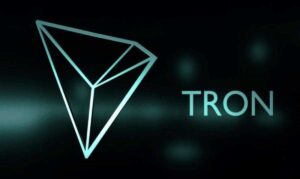Over the past year, tokenization has emerged as a prominent topic within Web3 ecosystem and drawn significant investment and interest from BlackRock, JPMorgan and other key players. Analysts predict tokenized assets may reach $2 Trillion market size by 2030 despite initial’slow start’. Attesting to its momentum is the recent bear market’s surge in tokenized US treasuries popularity; market capitalization rose 782 per cent year-on-year during 2023 alone from $104 million to $917 million! Meanwhile, global blockchain gaming market sales are predicted to hit $614.91 billion by 2030. Benefits are obvious: increased liquidity, enhanced transparency, strengthened security, seamless global access and ownership. Beyond finance and gaming, tokenization holds enormous promise to transform real estate, gaming, and supply chains; ushering in an age of accessibility and efficiency. Public Blockchains: Limitations in Application Problematic DevelopmentsDespite these impressive developments, reaching a fully tokenized world remains fraught with perils posed by public blockchains. Hilary Allen, Professor of Financial Regulation at American University has previously raised alarm over the ineffectiveness and fragility of public blockchains when used for mass tokenization – with scaling being an ongoing concern. Scalability issues plague public blockchains, making them less capable of handling high transaction volumes. A Bitcoin transaction usually takes an hour to be verified on average; this time frame depends heavily on network congestion. Ethereum faces similar scalability challenges to those faced by bitcoin: increased transactions led to record gas fee spikes during the first quarter of 2024 and nearly unusability of its network. Gas fees have dropped substantially in recent times; however, their root issues still must be solved – especially those related to minting and tokenization processes that cannot support widescale mainstream tokenization adoption by current infrastructure. As on any crowded highway, public blockchains like Ethereum that suffer scalability issues can quickly become overwhelmed with traffic, hampering their ability to efficiently store and scale tokenized assets cost-effectively and efficiently while security issues complicate matters further. Hackers or malicious groups gaining control of a blockchain’s consensus mechanism – known as 51% attacks – poses grave security concerns and should be seen as one of its major weaknesses. Blockchain tech was specifically created to stop this from occurring; however, an attack could result in double spending or transaction reversals, potentially disrupting ownership transfers for tokenized assets and leading to widespread chaos that undermines confidence in the system. But currently achieving majority ownership on either Bitcoin or Ethereum would be prohibitively expensive: an estimated $20 billion on Bitcoin alone. Bridges connecting different consensus systems and exchanging value are one of the more vulnerable elements of tokenization; even when constructed carefully they could still become vulnerable to hacks and exploits by malicious actors. Smart contracts also pose considerable threats. Exploitation can result in the theft or misappropriation of tokenized assets, diminishing their transformative potential in areas like gaming and finance. For tokenization to achieve its transformative potential in areas like gaming and finance, scaling is necessary so as to tokenize numerous assets simultaneously. Realistically, most public blockchains make this impossible at present. Consider what would happen if Minecraft were blockchain enabled game with every item being tokenized as soon as they are created by players; Minecraft boasts over 166 million monthly active players! Assuming each player needed tokenized in-game items per day for every game they were playing would place enormous strain on popular blockchains like Ethereum and would lead to increased congestion – driving up gas fees significantly in return. But are There Alternatives To Public Blockchains? Layer 2 solutions built atop existing blockchains have often been seen as solutions to scaling and security concerns associated with tokenizing at scale. Such solutions relieve much of the strain off public blockchains by processing transactions off-chain or bundling them prior to being submitted onto Layer 1, thus drastically decreasing congestion rates while simultaneously offering faster transactions at significantly reduced costs. However, Layer 2 solutions don’t come without their limitations: they still rely on Layer 1 blockchains, often necessitating tradeoffs between security, scalability and decentralization with these solutions. Most and possibly all L2s can be classified as “blockchain-lite,” offering similar functionality without as much security. To operate from their respective L1 blockchains, users need to send currency (wrapped currency), making for user unfriendliness that sometimes requires bridges for processing. L2Beat’s risk analysis indicates that most Layer2s carry inherent threats. As part of these considerations are: the following obstacles to submissions by whitelisted actors; that user withdrawals can be restricted by operators with permission to do so; there being no way to independently verify the system; proof construction relies fully on data that does NOT appear publicly on chain; and data Availability Committee with threshold 5/7 threshold as data source(s). Bridgeless Minting Alternative on-chain minting methods also promise increased scalability and efficiency. Layer 2 solutions like Ethereum can accomplish these functions more cost effectively, yet security must come at a price. Universal Layer 1s, unlike standalone L1s such as Avalanche, have the freedom to exist independently from a specific network and enable seamless interoperability among different ecosystems without needing bridges for interconnection. Polkadot’s cross-chain protocol (XCMv3) facilitates this functionality with blockchains communicating seamlessly among them. Polkadot-built L1s can leverage one aspect of XCMv3, known as Universal Location, that enables multiple consensus systems to refer to resources within each other’s frameworks. Just as URLs provide access to different web sites and webpages on the internet, Universal Location provides similar access for blockchains, smart contracts and tokens. L1s can utilize this tech to develop bridgeless patterns by which any blockchain can offload some of their transactions immediately. A quick count demonstrates this – more than 20% of on-chain transactions for Ethereum and Polygon can be offloaded immediately! That is an impressive sum. Architecture like this streamlines token creation and management processes, significantly decreasing cross-chain transaction risk while improving reliability overall. Imagine being able to mint millions of assets on any blockchain you choose without incurring native gas fees and remaining where there is liquidity. This would be amazing. Bridgeless MintingThe power of bridgeless minting lies within its capacity for unlocked tokenization: robust alternatives must be found beyond public blockchains in order to unlock tokenization’s full potential. Explore and develop secure on-chain minting methods is critical; by meeting scaleability and security challenges we can unlock tokenization’s full potential, revolutionizing industries such as gaming and finance while driving next wave digital innovation. In this article are several methods mentioned which might unlock tokenization’s full potential; more will follow shortly.
Social Share
![[original_title]](https://rawnews.com/wp-content/uploads/2024/07/tokens-fragile-1024x574.jpg)







